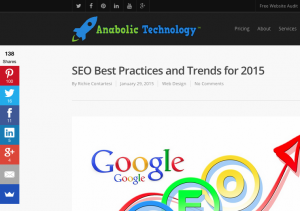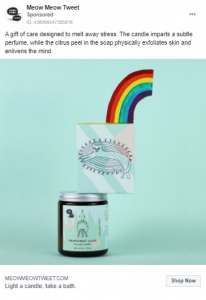— February 19, 2018
Ralph Waldo Emerson said, “Life is not a destination, it’s a journey.” The same is true about being an Agile organization. When we say we’re an agile agency, it’s not a fixed process. It’s a mindset, a way of looking at ourselves, our clients, and the work that we do together.
Being agile is a goal we work toward every day. It means we stay flexible when confronted with challenges, we embrace and adapt to new tools and technology, and we keep our minds open to new ideas and solutions.

We’re flexible. We keep it loose. But, that doesn’t mean we don’t have a plan.
Actually, being an agile organization requires more strategy than a traditional “services package” agency. Everything we create has to pass a litmus test: It has to positively impact the client’s goal for their business.
Nothing is auto-pilot. Nothing is “set it and forget it.” Being agile means constantly being in motion.
First, we set goals that matter.
Goals are the North Star of our marketing philosophy. Each client has a unique business, so each client has unique goals upon which we build our marketing strategies. Whether it’s landing page conversions, e-commerce sales, student registrations, or building a rabid fanbase for their content, we set aggressive, but achievable, goals for growth.
We use the SMART goal methodology when setting our goals.
- Specific
- Measurable
- Achievable
- Results-focused
- Time-bound
If we know our client wants to increase their new patients, we first look at the rate of new patient growth over the last quarter, year-over-year trends, and any changes within the client’s organization that may have affected growth. Goals built from solid historical data are more realistic and more likely to be achieved.
Having clear SMART goals informs what key performance indicators (KPIs) we’ll track. This isn’t a passive exercise. We set up goal boards through Databox that display on the TVs in our office. On any given day, at any time, we can see exactly how our efforts are helping our clients succeed. And if they’re not … well, that’s where agility comes in handy.
We pivot when we need to.
If we set a goal for online party bookings every quarter, and we see that after the first month we’re not on track to reach that goal, we have the flexibility in our planning to test new things or add more tried-and-true tactics into the mix.
While we set a quarterly strategy, we plan our projects on a weekly basis. If we see a client isn’t trending towards goal completion on Friday afternoon, by Monday morning we’ll have a fresh plan in place.
Everything we create has to pass a litmus test: It has to positively impact the client’s goal for their business.
Here’s an important bit: These changes aren’t free-style guesses. We A/B test, perform conversion audits, dig into the data, test theories, and check in across departments and across teams for what’s worked and what hasn’t.
When we pivot, it’s not an emergency swerve. It’s a deliberate course correction.
We stay the course.
Data, not feelings, guide us. Sometimes that means pushing back when a client proposes an idea they “feel” will work. Part of our job is keeping our clients on track, and keeping them from sabotaging their own best efforts.
That doesn’t mean we smackdown ideas with a hard No, but we know at the end of the day our clients hired us because we are experts. They trust us to inform and guide them. And that’s what we deliver. We’ll show the data that supports our view, point out the limitations of a “big” idea, or, in some cases, run a test to drive the point home.
That’s not to say all client ideas are bad, or that all of our ideas are good. The point is we don’t rely on feelings, assumptions, or even “best practices.” We rely on research, data, numbers, results.
We get our mad scientist on.
Does it positively impact a business goal? Yes, then let’s roll! The best part of being an agile organization is the ability to test and tweak what we’re doing and see the results. No matter who brings the big idea to the table — if it’s going to move the needle for our client then we will make it happen.
Nothing is auto-pilot. Nothing is “set it and forget it.” Being agile means constantly being in motion.
There’s a tremendous amount of freedom in this work model. And with great freedom comes great responsibility. Which is why we communicate more than any other agency I’ve ever worked for. Weekly team planning meetings, daily team check-ins, regular client calls, review meetings at week’s end, and flash brainstorms to present new ideas for any clients who need a little extra attention.
Not to mention a nearly constant stream of client-related chatter in Slack.
We talk to each other, and to our clients. We share ideas, we break them down, we build them up, we test them, and then, if we believe in them, we launch them into the world.
We stay flexible; it helps us reach for greater heights of success.
Business & Finance Articles on Business 2 Community
(39)









